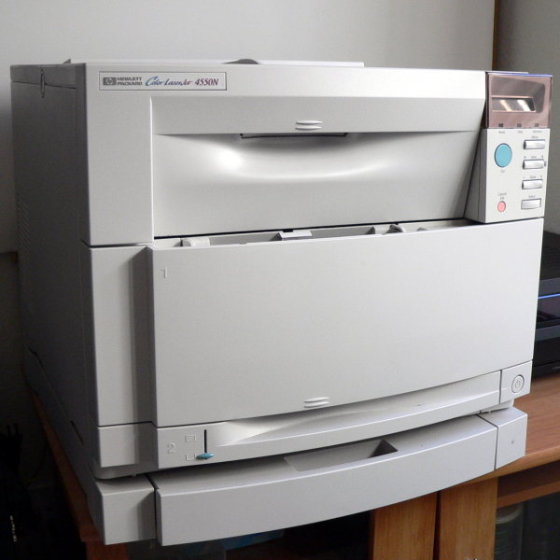“I like an escalator because an escalator can never break, it can only become stairs. There would never be an escalator temporarily out of order sign, only an escalator temporarily stairs. Sorry for the convenience.”
— Mitch Hedberg
Sometimes funny, sometimes thoughtful, always a good time

“I like an escalator because an escalator can never break, it can only become stairs. There would never be an escalator temporarily out of order sign, only an escalator temporarily stairs. Sorry for the convenience.”
— Mitch Hedberg
I just finished reading the Lord of the Rings trilogy.

This was the ninth time. Although I’ve read a ton of books throughout my life, there are only a handful I’ve read more than once. And this is the only one I’ve read nine times. Truly the greatest epic book ever: action and romance and history and depth and a grand scale unlike anything else in fiction. I love it.
On a related note, Alex has started reading it. I guess some of the themes in the books have been discussed in his classes at school, so he decided he should find out what all of it means. He read The Hobbit a few years ago, but as we all know that’s really just a children’s tale and only a lighthearted introduction into the real story. It’ll be interesting to see if he enjoys it.
I sat down this afternoon and put together a diagram of my hosting company. I manage 29 servers– mostly mine, but some for clients– and at times it’s hard to remember what goes where. Does everything have a hot failover ready to jump in if a server goes down? Am I backing up files correctly so I always have multiple copies of everything? Are the services balanced so my clients get the best performance?

Since the servers I own are all named for atomic elements (props to Thom) I figured the diagram should look sort of periodic-table-like. Yes, that makes me even geekier: combining system administration with chemistry.
The good news (well, sort of) is that I found a few things that could be beefed up a bit. So that’ll require a few upgrades over the coming days and weeks. It’s funny that when I tell some of my clients that in addition to doing web programming I can also host everything for them, their first question is “are you running these web sites in your basement or something?” No, not quite. I pay more per month for co-location than I do for my house.
Around 2001 I bought an HP 4550 color laser printer. This thing was the bomb. It was mammoth– tipping the scales at around 150 pounds– and it had all the bells and whistles you could want. It cost something like $2,500 and I invested another $400 in a duplexer. It was a real workhorse, serving me well for many years. But over time technology progressed and it became a bit of a dinosaur. The biggest problem was the consumables: toner cartridges (there are four) cost about a hundred bucks apiece, and the drum (which finally gave out) is another two hundred.
So instead of spending $600 to renew all of the guts of the HP, I ended up buying another color laser printer from Samsung. I think it cost $300.
Anyway, for about five years this behemoth has sat in my office, completely unused.

I finally decided it’s time to part company, so I listed it on Craigslist: free to anyone willing to come over here and help me haul it out of the basement. I don’t know if I’ll get any takers, and if I don’t I’m going to switch to Plan B, which is to launch it out of my second-story bedroom window onto the driveway just to see what happens.
Actually that was Plan A, but Laralee said it would be wasteful and setting a bad example for the kids. So I’ll see if I can pass it off to someone who wants it first…
I found this story from hacker folklore and thought it was immensely entertaining.
You don’t touch an unknown switch on a computer without knowing what it does, because you might crash the computer. The switch was labeled in a most unhelpful way. It had two positions, and scrawled in pencil on the metal switch body were the words ‘magic’ and ‘more magic’. The switch was in the ‘more magic’ position.
I called another hacker over to look at it. He had never seen the switch before either. Closer examination revealed that the switch had only one wire running to it! The other end of the wire did disappear into the maze of wires inside the computer, but it’s a basic fact of electricity that a switch can’t do anything unless there are two wires connected to it. This switch had a wire connected on one side and no wire on its other side.
It was clear that this switch was someone’s idea of a silly joke. Convinced by our reasoning that the switch was inoperative, we flipped it. The computer instantly crashed.
Imagine our utter astonishment. We wrote it off as coincidence, but nevertheless restored the switch to the ‘more magic’ position before reviving the computer.
A year later, I told this story to yet another hacker named David Moon. He clearly doubted my sanity, or suspected me of a supernatural belief in the power of this switch, or perhaps thought I was fooling him with a tall tale. To prove it to him, I showed him the very switch, still glued to the cabinet frame with only one wire connected to it, and still in the ‘more magic’ position. We scrutinized the switch and its lone connection, and found that the other end of the wire, though connected to the computer wiring, was connected to a ground pin. That clearly made the switch doubly useless: not only was it electrically nonoperative, but it was connected to a place that couldn’t affect anything anyway. So we flipped the switch.
The computer promptly crashed.
This time we ran for Richard Greenblatt, a long-time MIT hacker, who was close at hand. He had never noticed the switch before, either. He inspected it, concluded it was useless, got some diagonal cutters and snipped the wire. We then revived the computer and it has run fine ever since.
We still don’t know how the switch crashed the machine. There is a theory that some circuit near the ground pin was marginal, and flipping the switch changed the electrical capacitance enough to upset the circuit as millionth-of-a-second pulses went through it. But we’ll never know for sure; all we can really say is that the switch was magic.
I still have that switch in my basement. I usually keep it set on ‘more magic’.
I think all of us need a switch like that in our lives.
For the last few months, Fridays are the days when I step back from the day-to-day programming work I do for clients, and instead focus on growing my business and figuring out what applications or tools or directions will help us take the next step. So today I’ve been exchanging some emails with my longtime friend Lily, who is a very smart marketer (and co-founder of Zing, in fact). Below is a snippet of our conversation, which I thought was worth saving somewhere.
I’ve noticed a lot of agencies which formerly did web design or marketing are now re-branding themselves as “new media” companies. Basically I think that means they mess around with Facebook and Twitter and YouTube and blogs. And honestly I haven’t been very impressed with the handful of such agencies I’ve worked with (because my clients hired them and then asked me to work with them). It’s sort of like the companies who do SEO: they tend to overpromise and underdeliver, and their level of savviness about the web and about the technology inherent in these things is frighteningly low.
I’ve had many clients ask about “getting on Facebook” or “setting up Twitter” and I’ve thought about how to best approach that. In the end I think the real value that Zing brings to the table is super cool programming and software integration that other companies just can’t do. Our custom apps always impress people, and we plug into databases and accounting systems and RSS feeds and whatever in ways that I don’t see a lot of other companies doing. Most agencies that advertise themselves like we do are really taking Drupal (a free CMS) and tweaking a few layouts and calling it “programming”. I’m not saying that’s bad, but it’s definitely not at the level of what we do.
So in the end, I think repositioning Zing to be a “new media” company would be unwise. We could jump on the Facebook bandwagon and start spouting all of that kind of stuff, but there’s a lot of competition in that space (some good, and most not so good) and in the end I think in a year or so Facebook and/or Twitter will be replaced by something else. Look at MySpace: two years ago it was The Next Big Thing, and now it’s a ghost town because Facebook eclipsed it. Things move really fast in the web world these days, and hitching all of your hopes to a wagon like that is a short-term gain but a long-term dead end.
All that being said, I don’t want to give you the impression I’m turning my back on social media or refusing to work on it. On the contrary, we’ve been talking internally about how to better tie our CMS and intranet tools into Facebook and Twitter and WordPress. We recognize they’re important facets of web marketing, and it’s dumb to ignore them. But at the same time, we’re keeping our core competencies where I think we’re best: custom programming and complicated database development.
Sunny? Check.
70 degrees? Check.
No wind? Check.
Ultimate. Game on.
I’m shopping for a cheap video card (triple monitors, anyone?) and it’s entertaining reading the customer reviews of some of these.
With a selection of about a gazillion cards– all of which have pretty much the same specs and cost– I guess I should just choose the card with the most humorous reviews or something.
It’s Sunday night and I’m a little bored, so I was poking around some fractal software and found a package called Xaos which is pretty cool. It’s got a nice mechanism to do real-time zooming into areas of the Mandelbrot Set (amongst others).

I remember messing around with Fractint back in college– perhaps 15 years ago– and how maddeningly slow it was to calculate these images. You’d find an area that looked interesting and wait for the computer to churn through the numbers for up to a minute before you saw the detailed image. Now my laptop can generate zoom levels in the billions in fractions of a second.

For math geeks like me, that’s pretty dang cool.